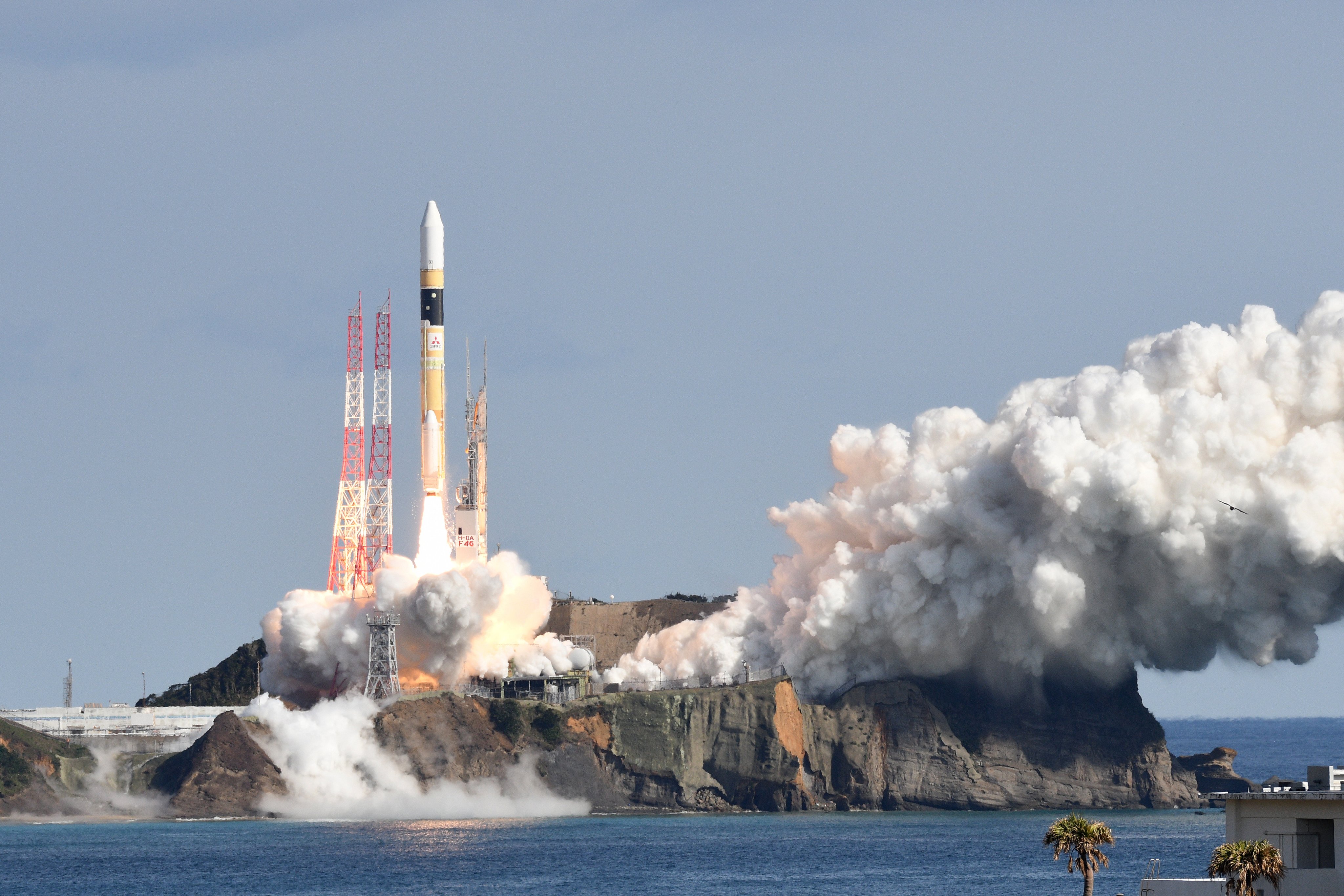Japanese rocket launches radar spy satellite

A Japanese radar satellite took flight on Wednesday evening (Jan. 25), adding to the nation's reconnaissance capabilities.
An H-IIA rocket topped with the IGS (Intelligence Gathering Satellite) Radar 7 spacecraft lifted off from Japan's Tanegashima Space Center Wednesday at 8:50 p.m. EST (0150 GMT and 10:50 a.m. local Japan time on Jan. 26).
"The rocket flew as planned, and it was confirmed that the Information Gathering Satellite Radar 7 was successfully separated," Mitsubishi Heavy Industries, which operates the H-IIA, said via Twitter on Wednesday night (in Japanese; translation by Google.)
Related: The history of rockets
According to EverydayAstronaut.com, IGS Radar 7 is headed toward sun-synchronous orbit, a polar path in which satellites zoom over patches of Earth at the same local solar time each day. A sun-synchronous orbit provides consistent lighting conditions over time and is therefore particularly favored by spy and weather satellites.
IGS Radar 7 will be operated by the Cabinet Satellite Information Center (CSICE), which is part of Japan's Cabinet Intelligence and Research Office, as EverydayAstronaut.com noted.
"Not much is known about this specific satellite; however, CSICE has stated that the IGS series of satellites is used for gathering information necessary to national security, as well as crisis management," the outlet wrote in a mission description.
Breaking space news, the latest updates on rocket launches, skywatching events and more!
Wednesday's launch was the first of the year for Japan. The nation conducted only one orbital launch in 2022, and that flight, in October, was a failure.
The October 2022 mission involved Epsilon, a 78-foot-tall (24 meters) rocket that had flown just five times previously. (Each of those prior missions was successful.) The H-IIA is much bigger and has far more spaceflight experience.
The 174-foot-tall (53 m) H-IIA has now flown 45 times to date and has failed just once, in November 2003. The powerful rocket has lofted some high-profile payloads since coming online in 2001, including Japan's asteroid-sampling Hayabusa2 spacecraft and the Hope Mars orbiter, the United Arab Emirates' first-ever interplanetary mission.
Editor's note: This story was updated at 12:15 p.m. EST on Jan. 26 to include a tweet by Mitsubishi Heavy Industries, which indicated that the satellite deployed successfully.
Mike Wall is the author of "Out There" (Grand Central Publishing, 2018; illustrated by Karl Tate), a book about the search for alien life. Follow him on Twitter @michaeldwall. Follow us on Twitter @Spacedotcom or Facebook.

Michael Wall is a Senior Space Writer with Space.com and joined the team in 2010. He primarily covers exoplanets, spaceflight and military space, but has been known to dabble in the space art beat. His book about the search for alien life, "Out There," was published on Nov. 13, 2018. Before becoming a science writer, Michael worked as a herpetologist and wildlife biologist. He has a Ph.D. in evolutionary biology from the University of Sydney, Australia, a bachelor's degree from the University of Arizona, and a graduate certificate in science writing from the University of California, Santa Cruz. To find out what his latest project is, you can follow Michael on Twitter.
